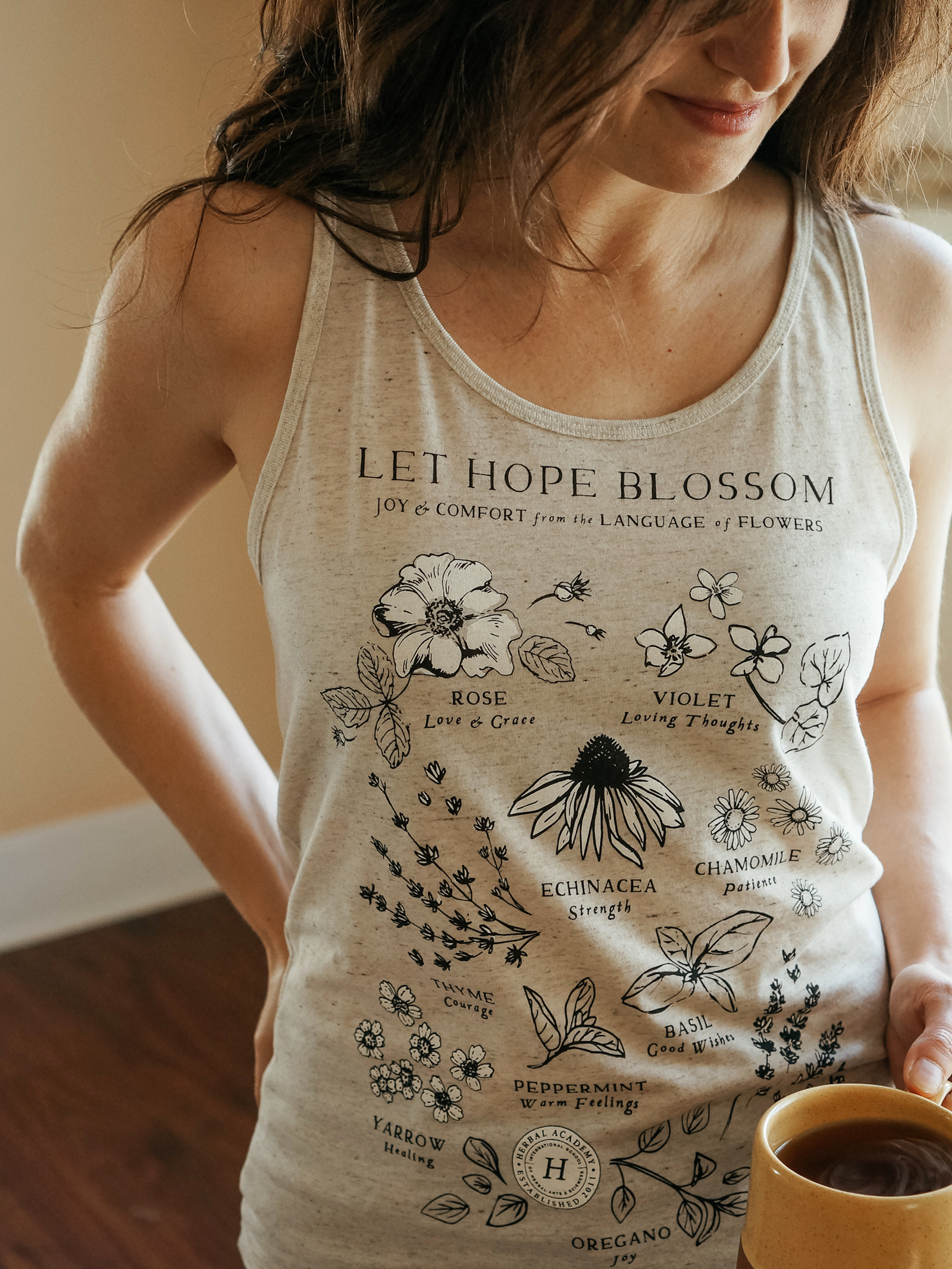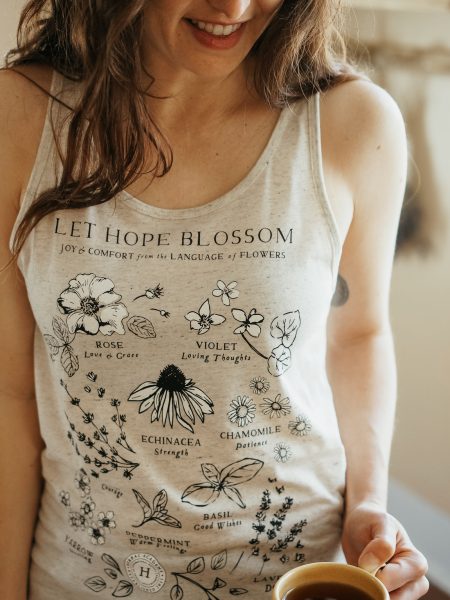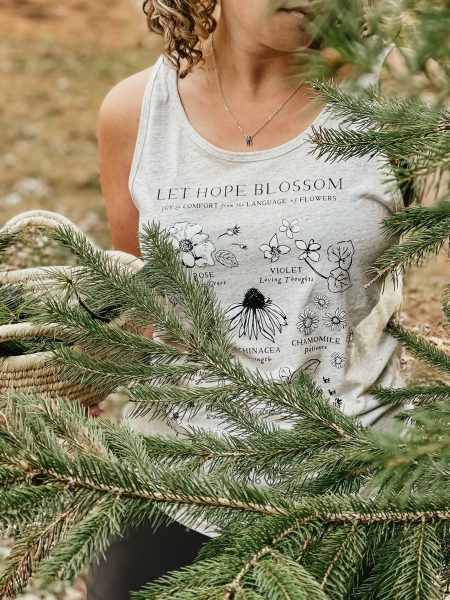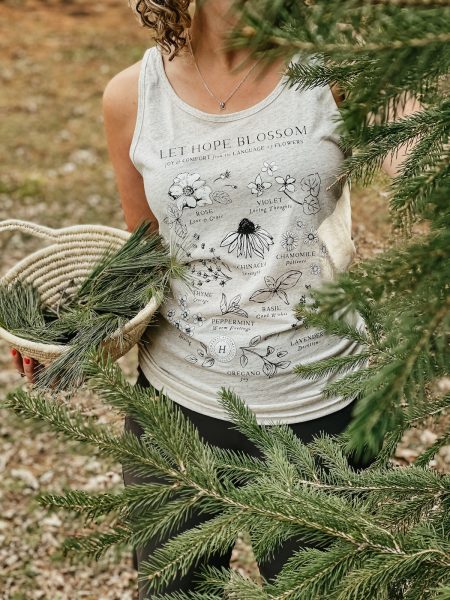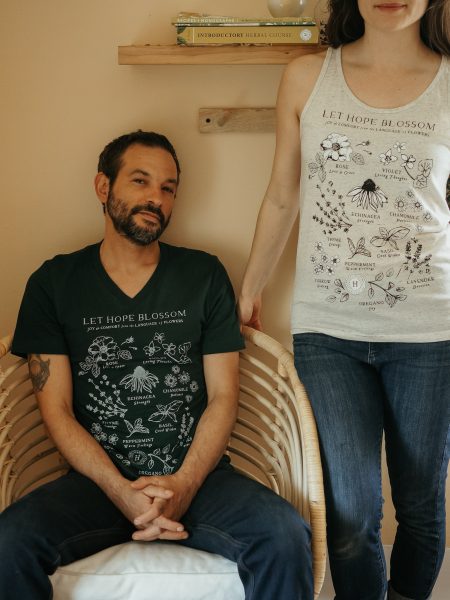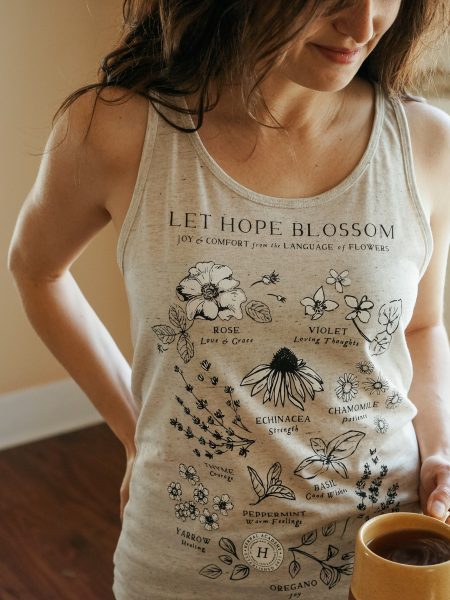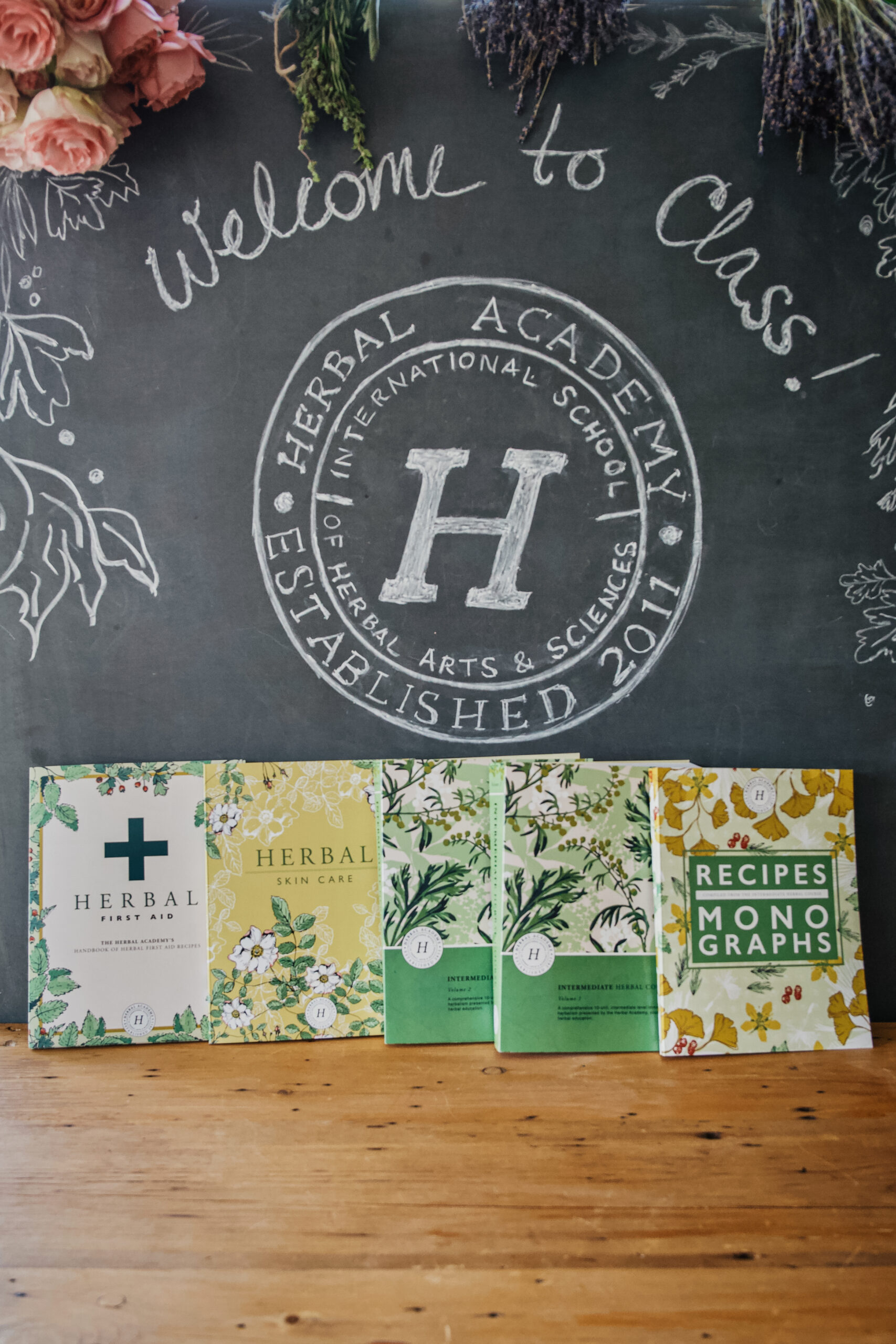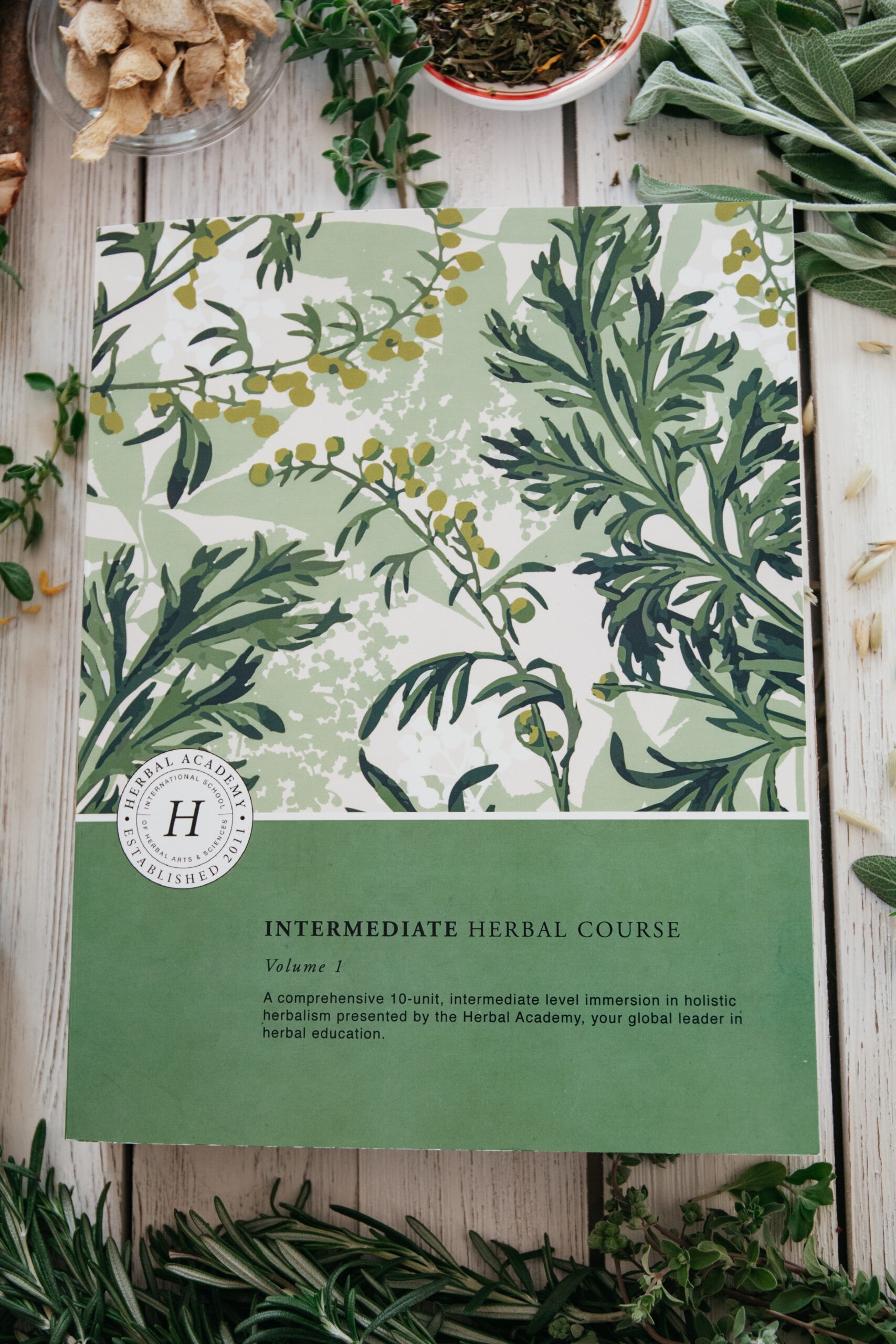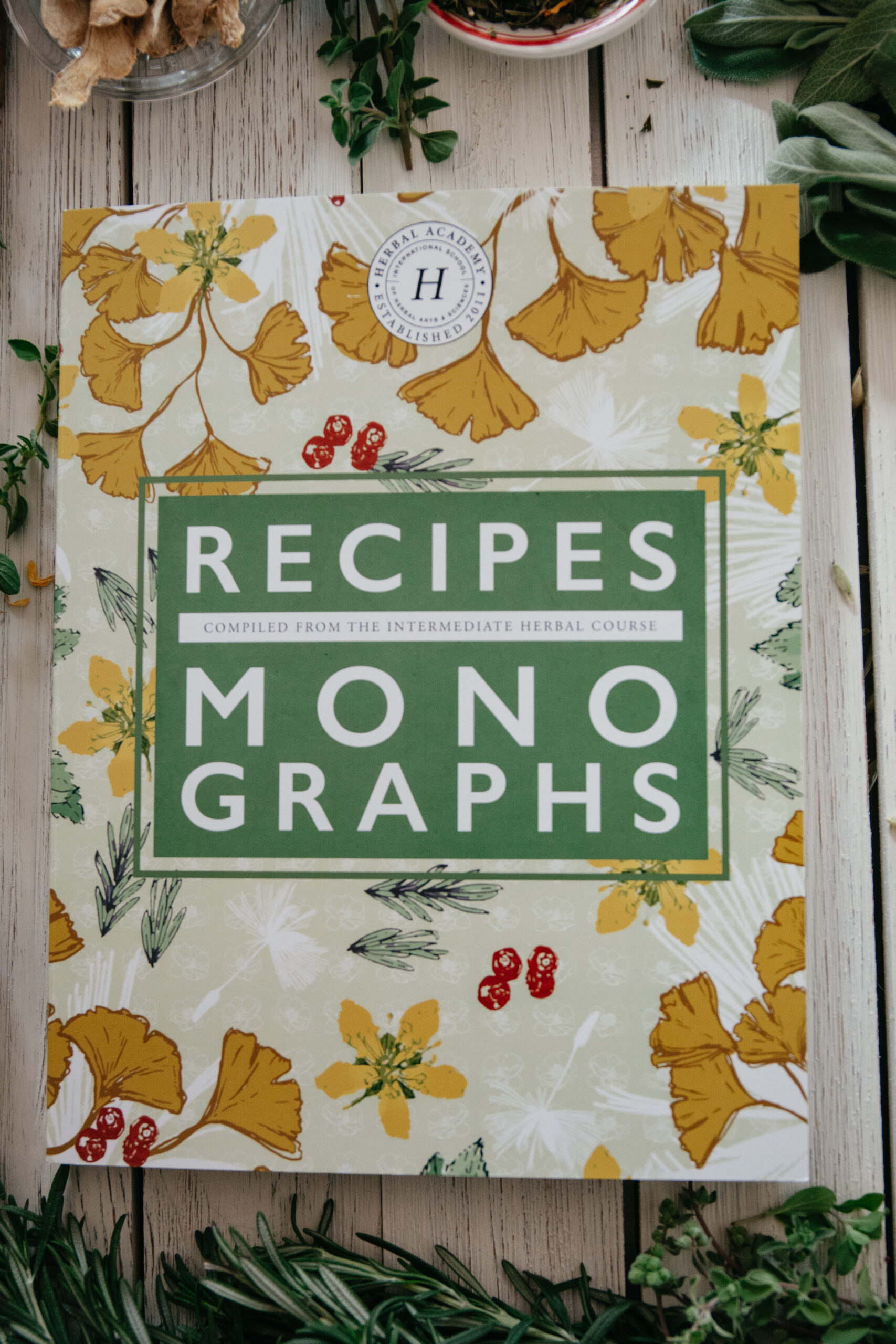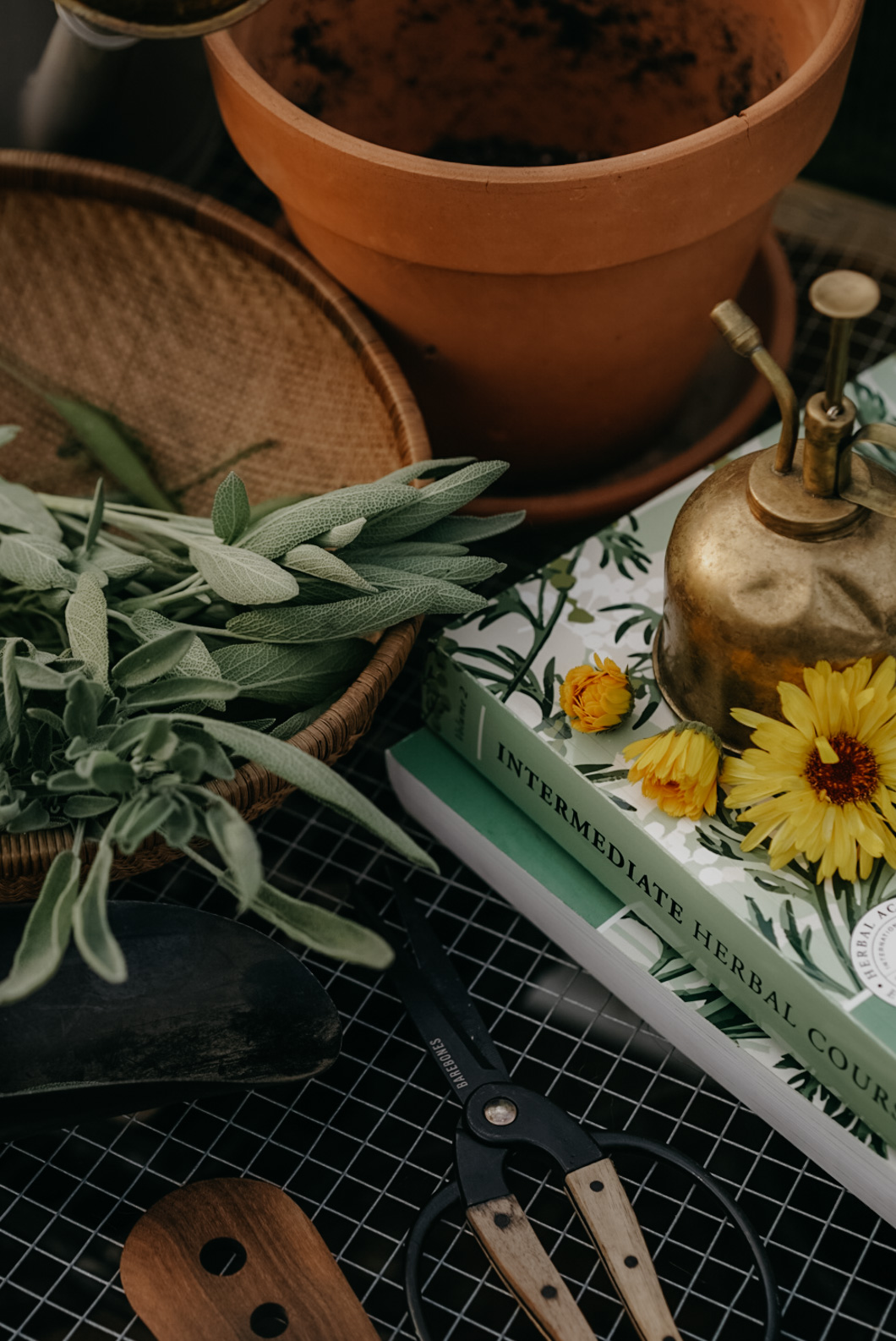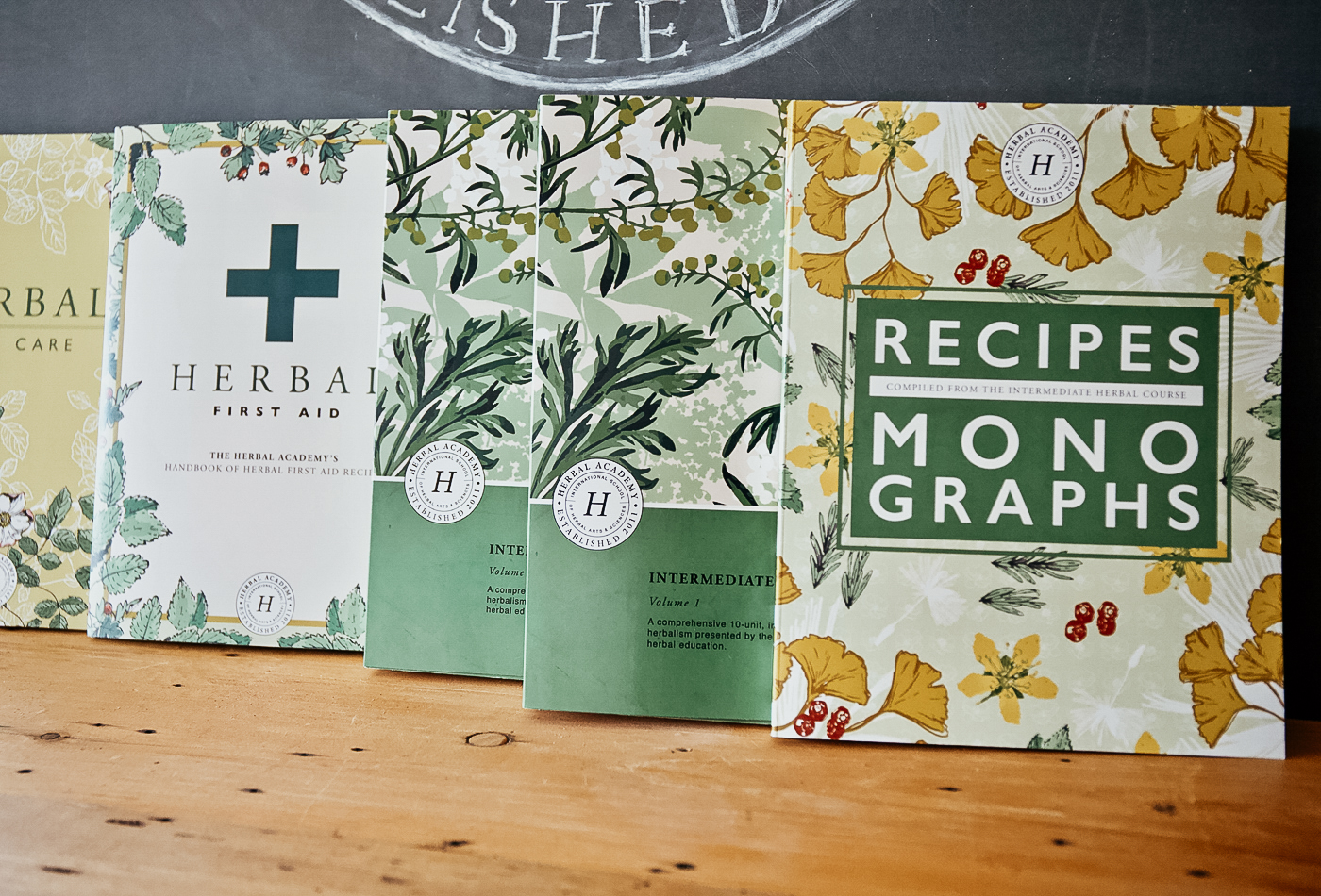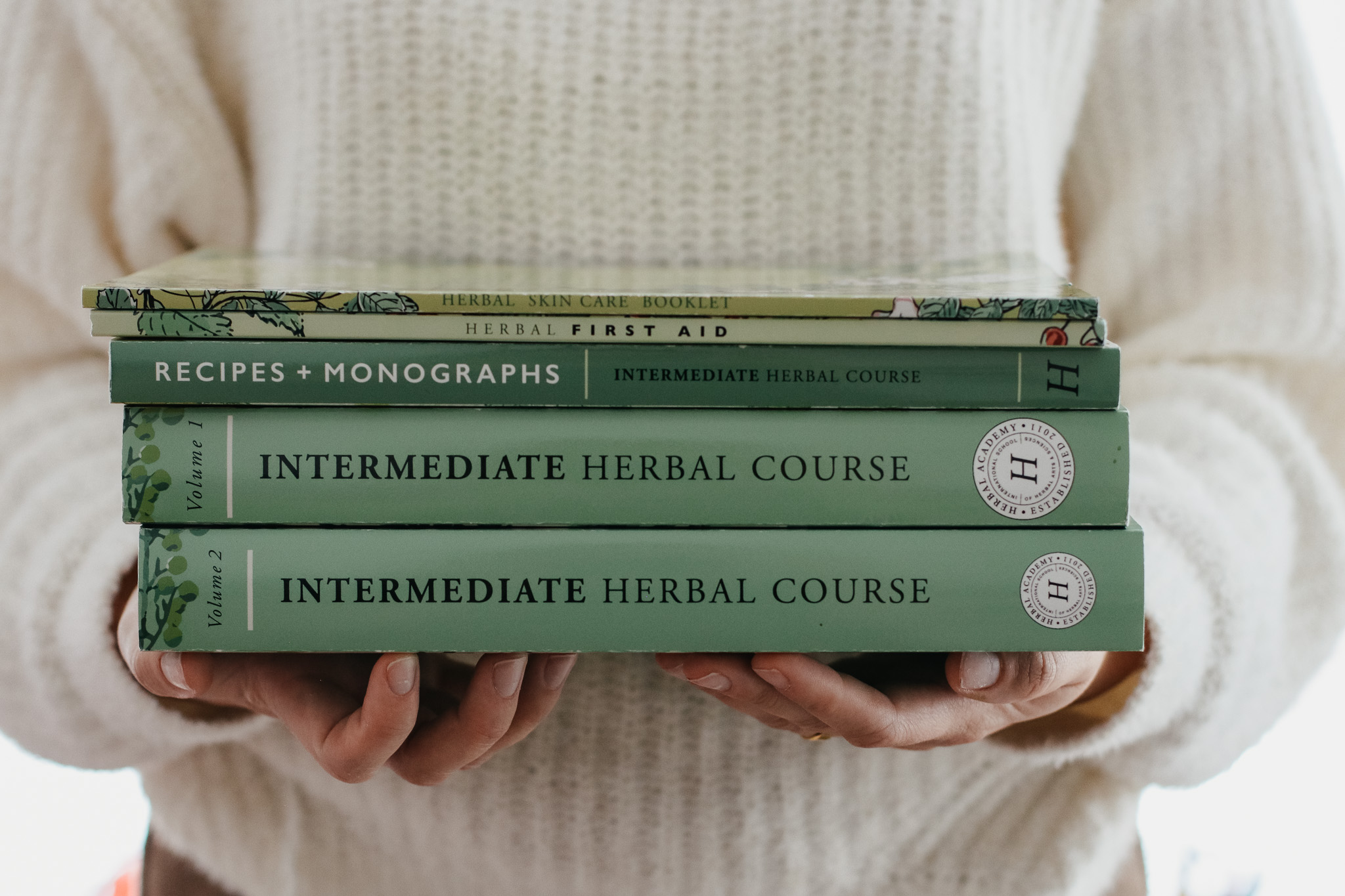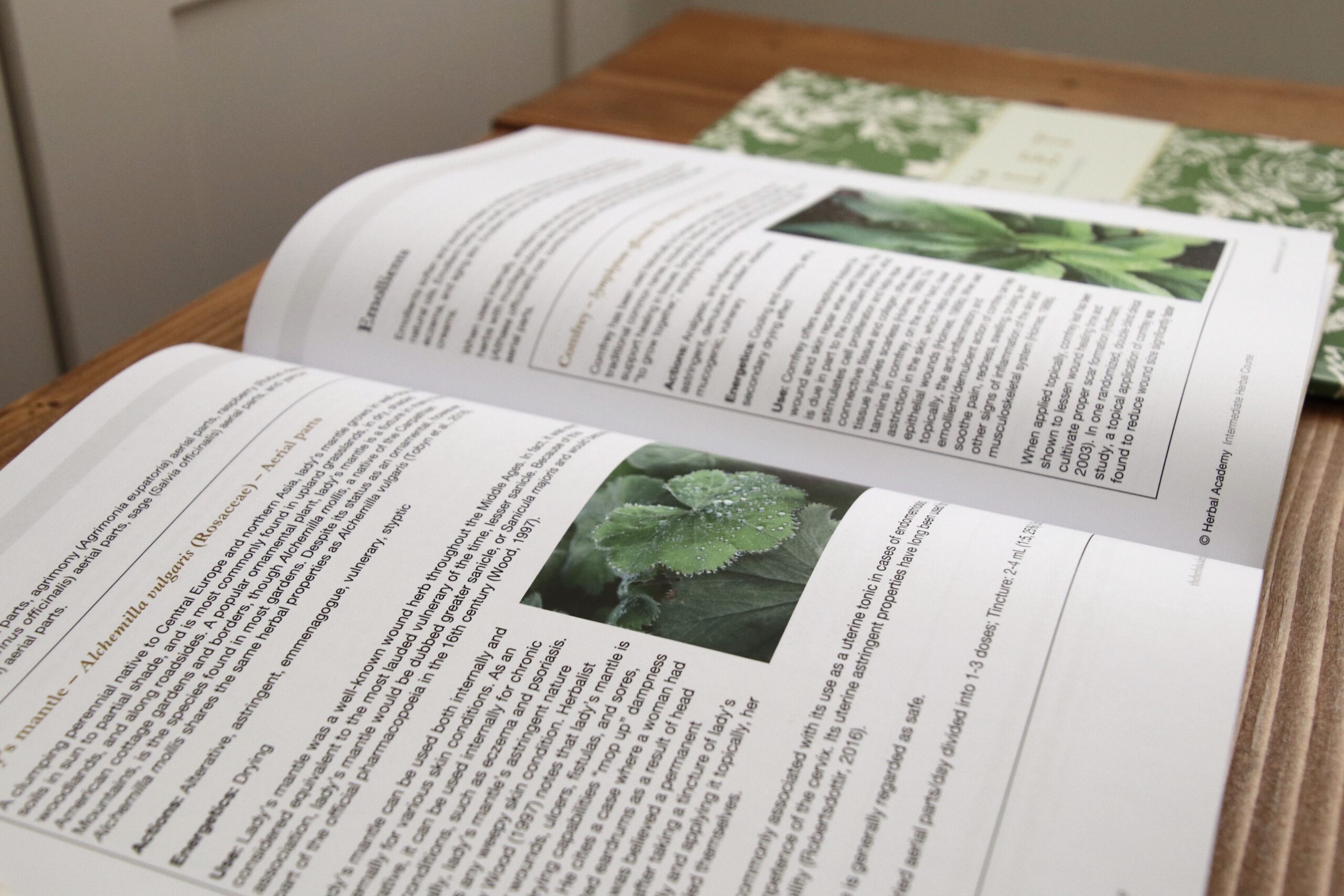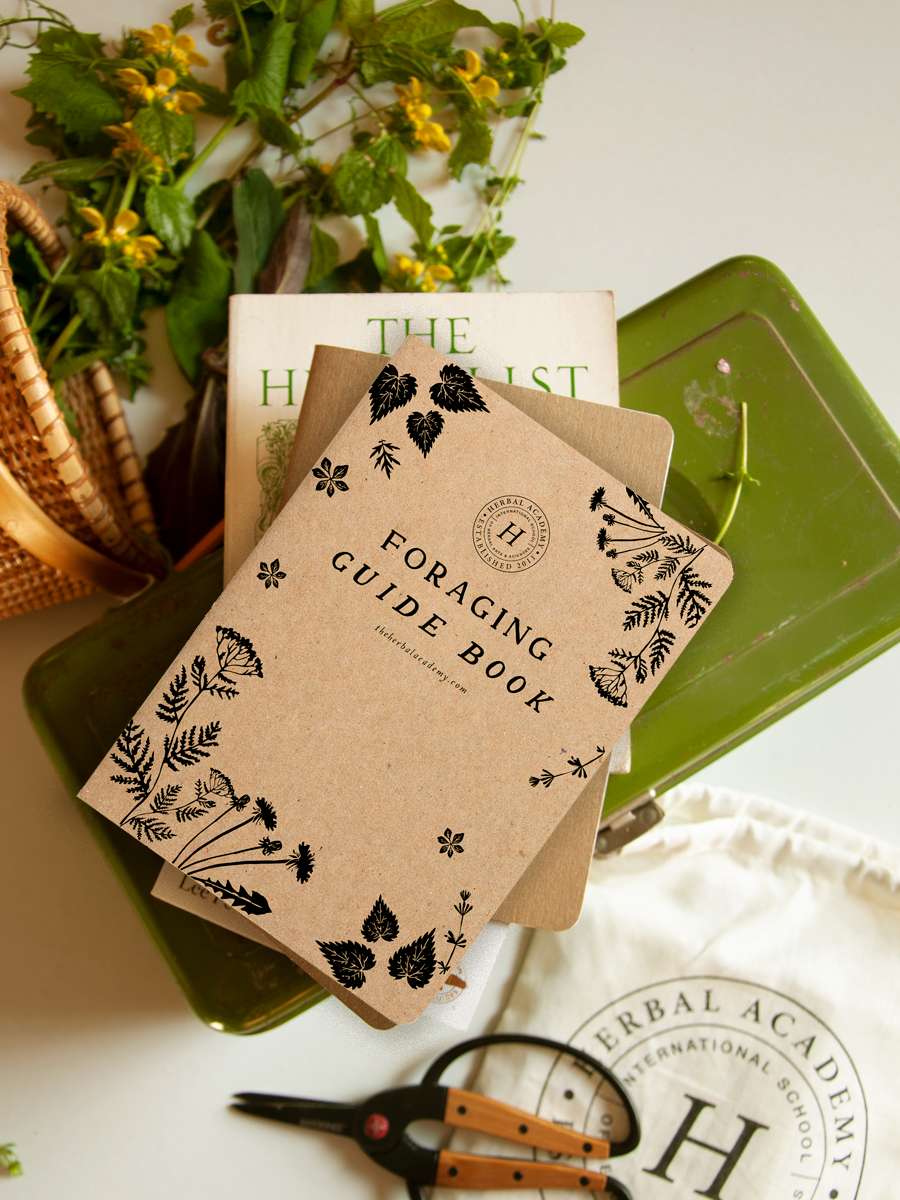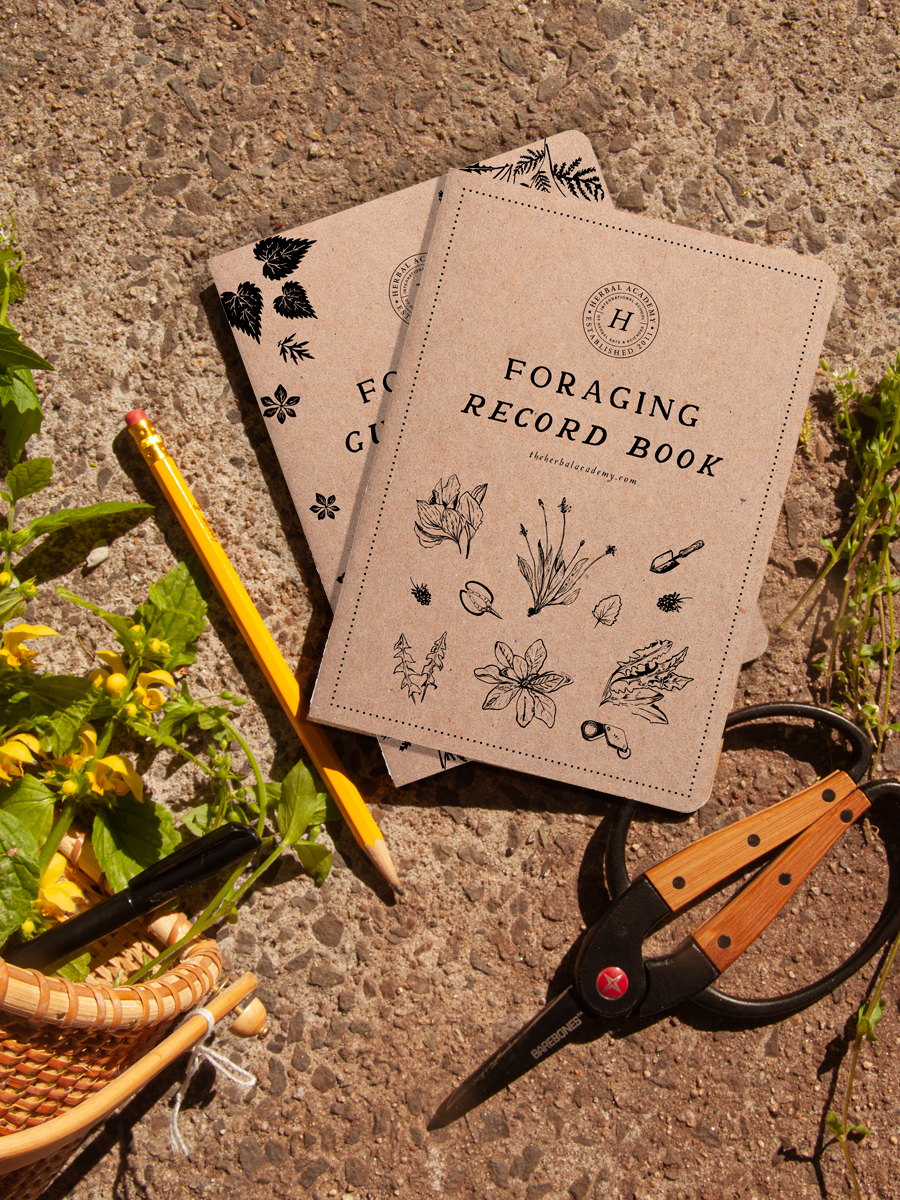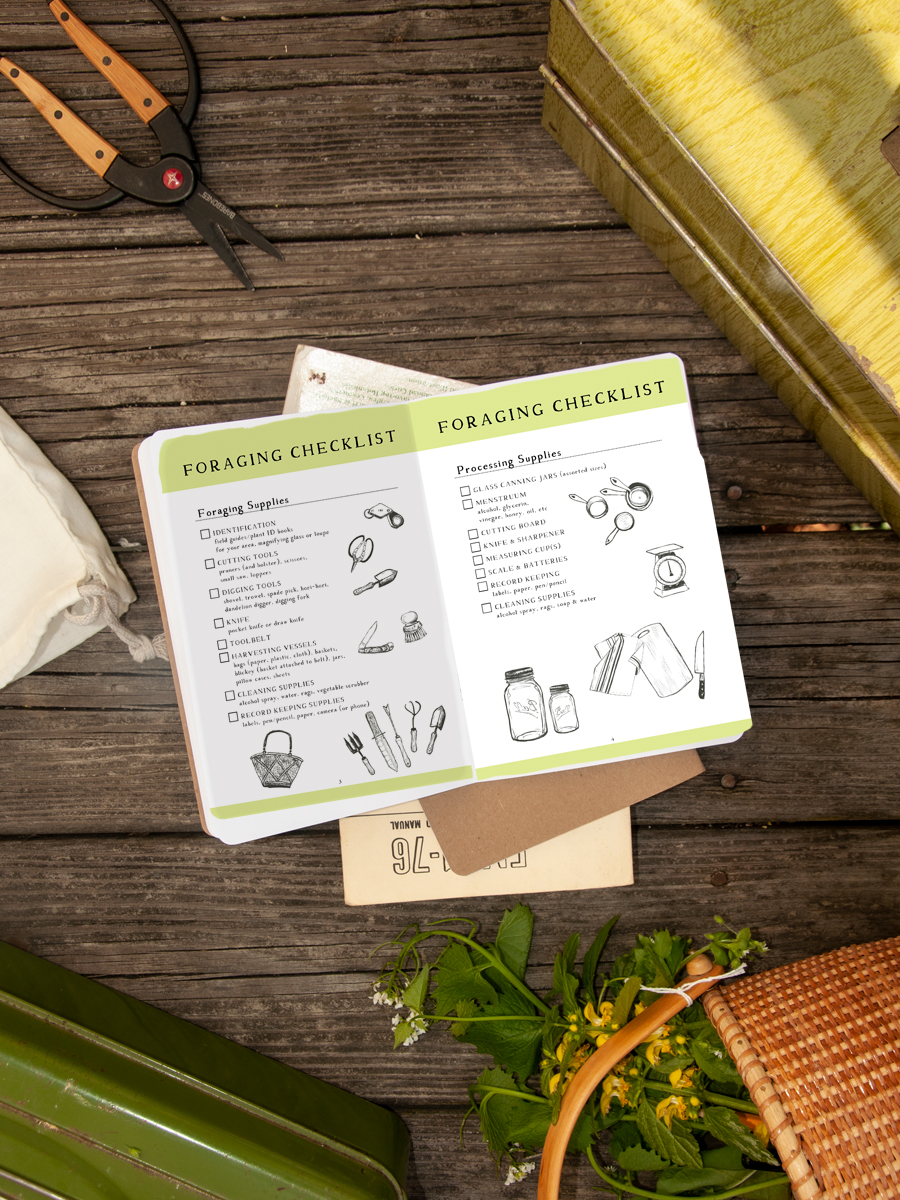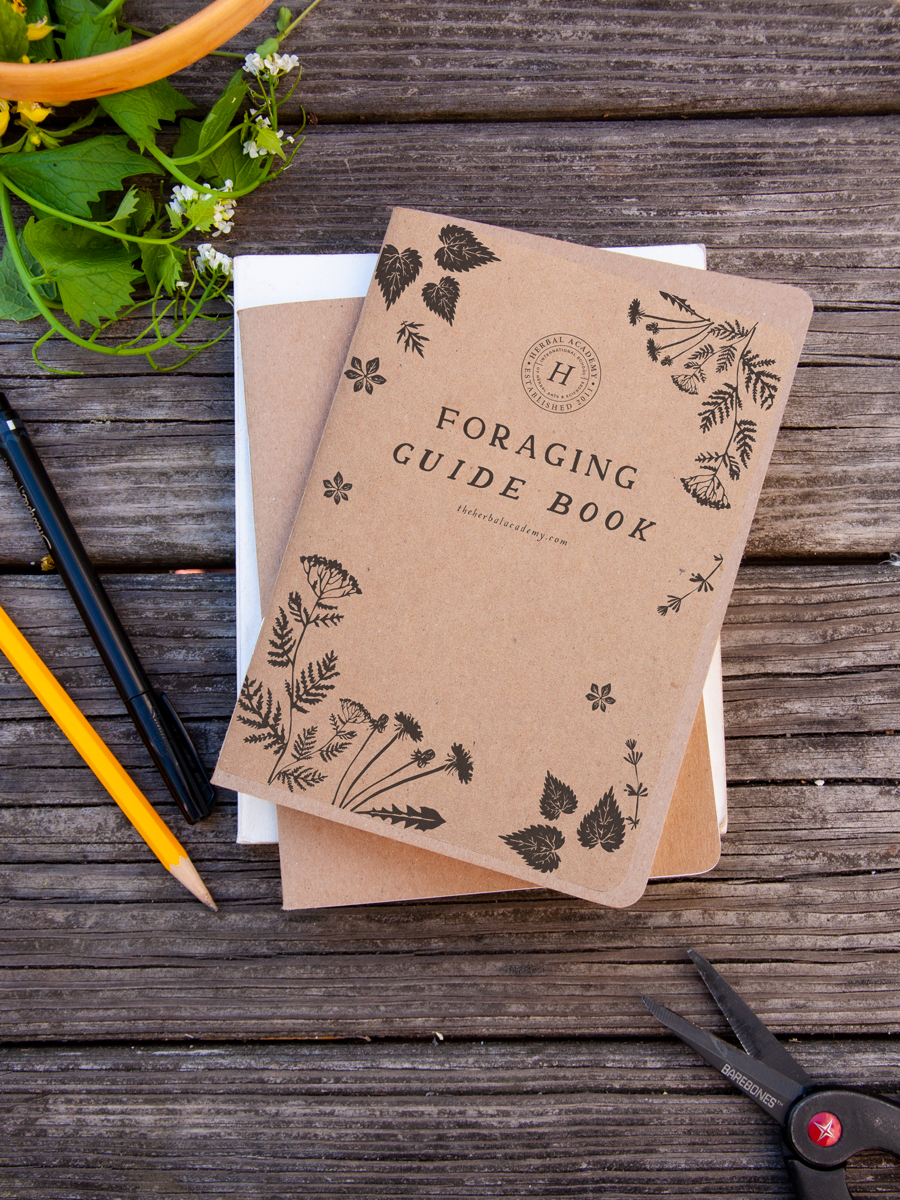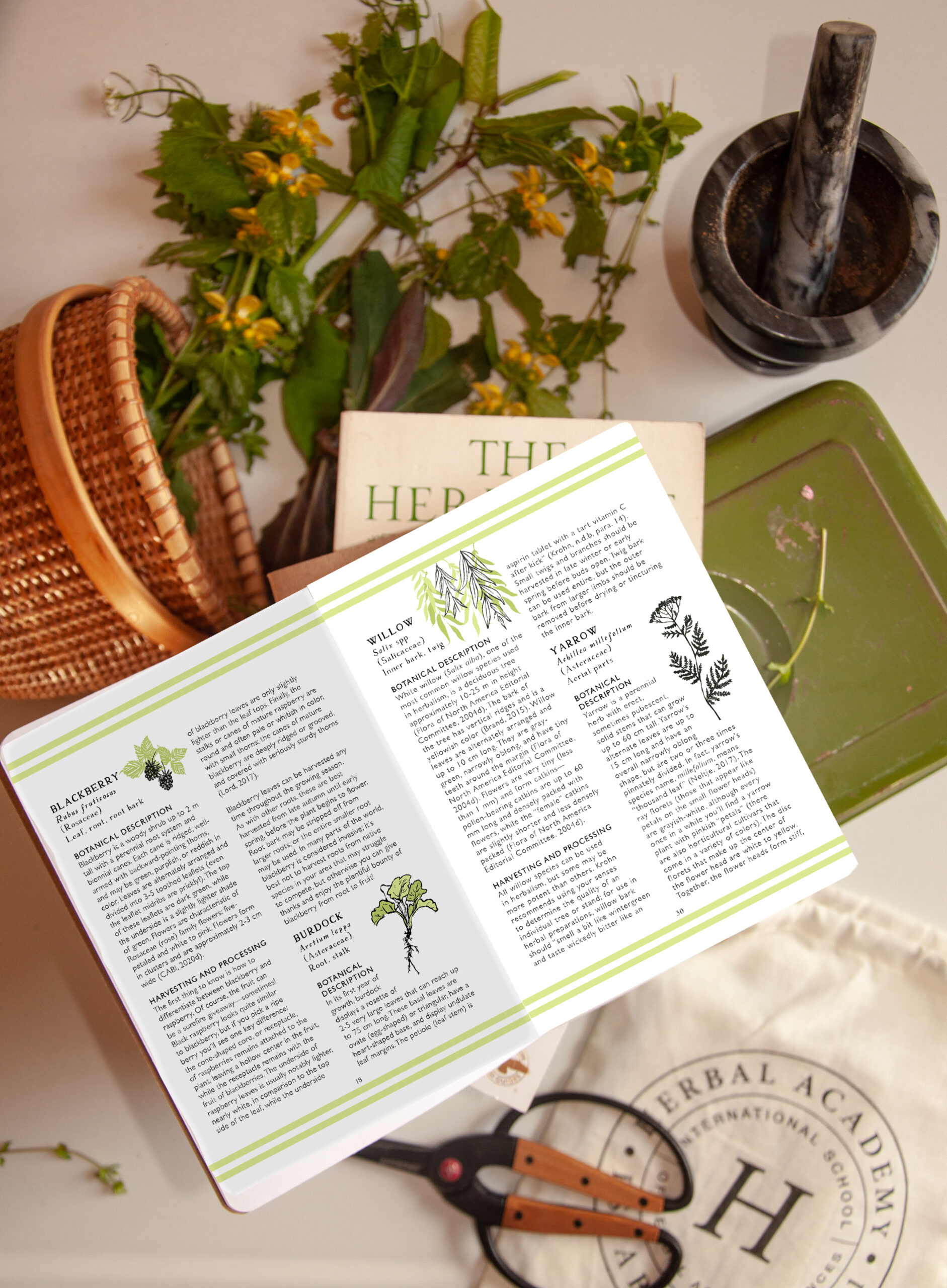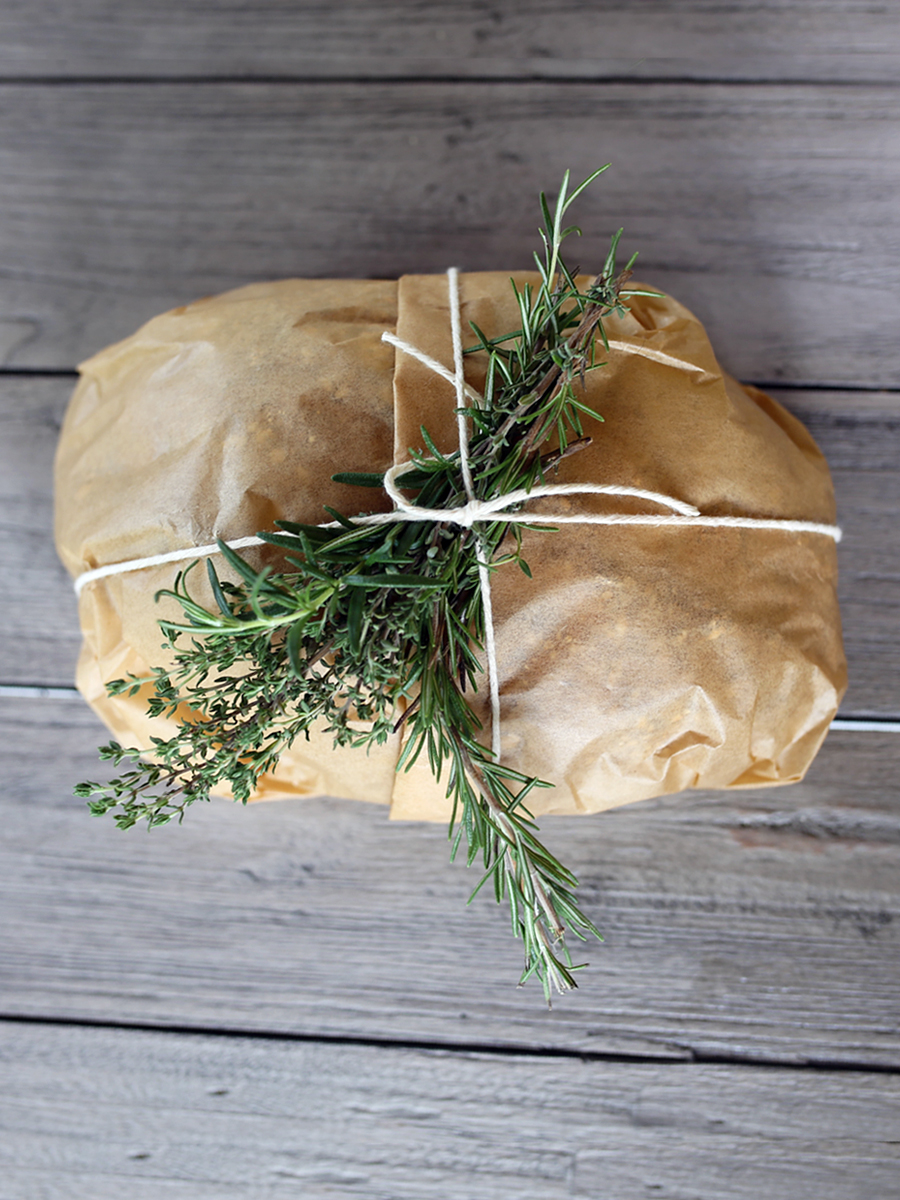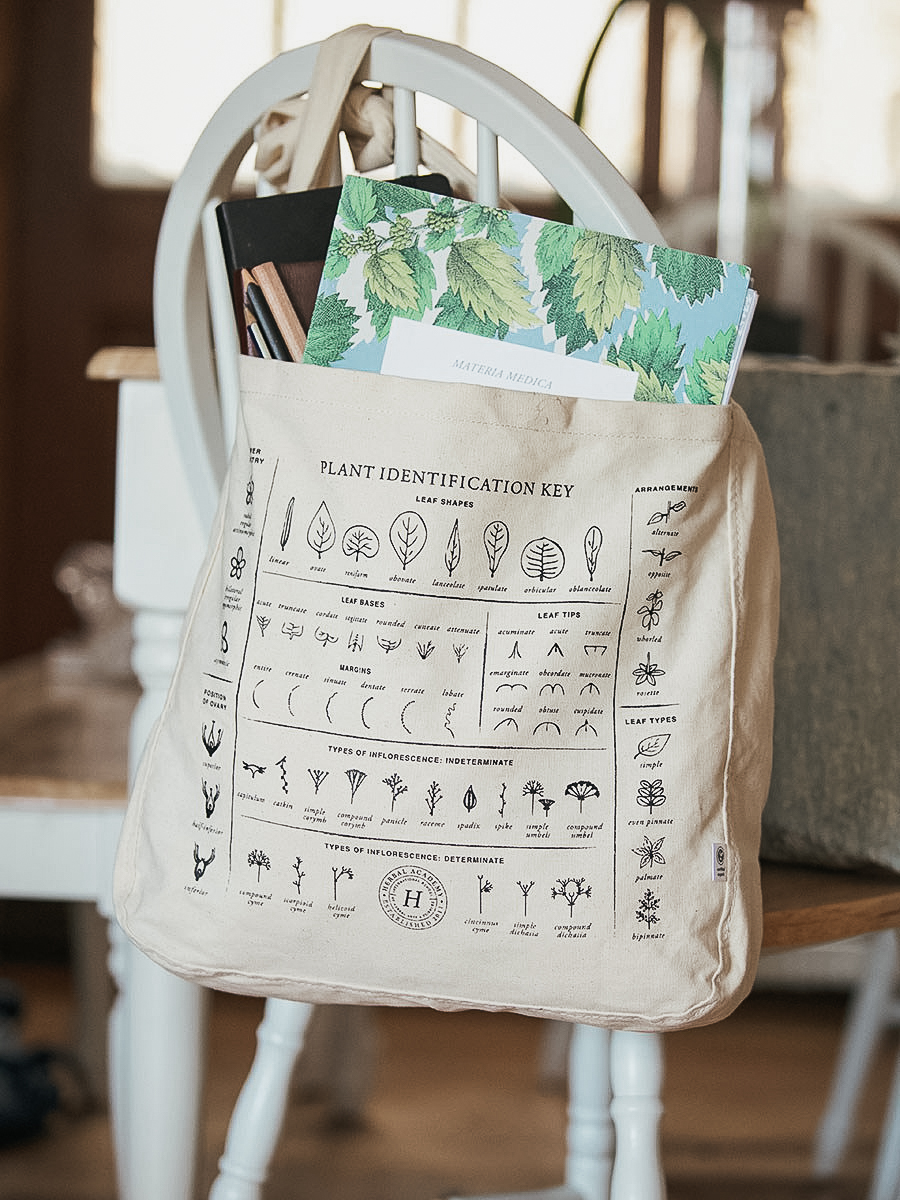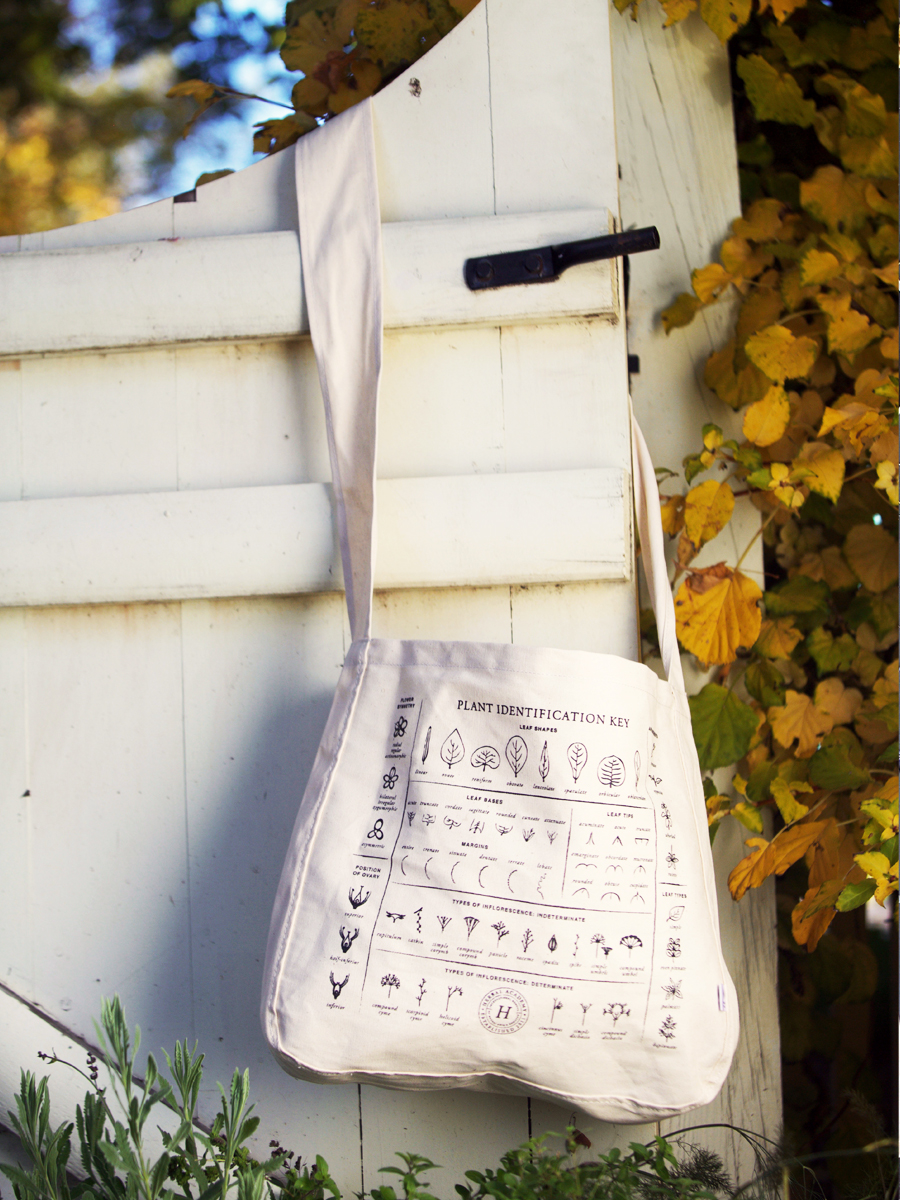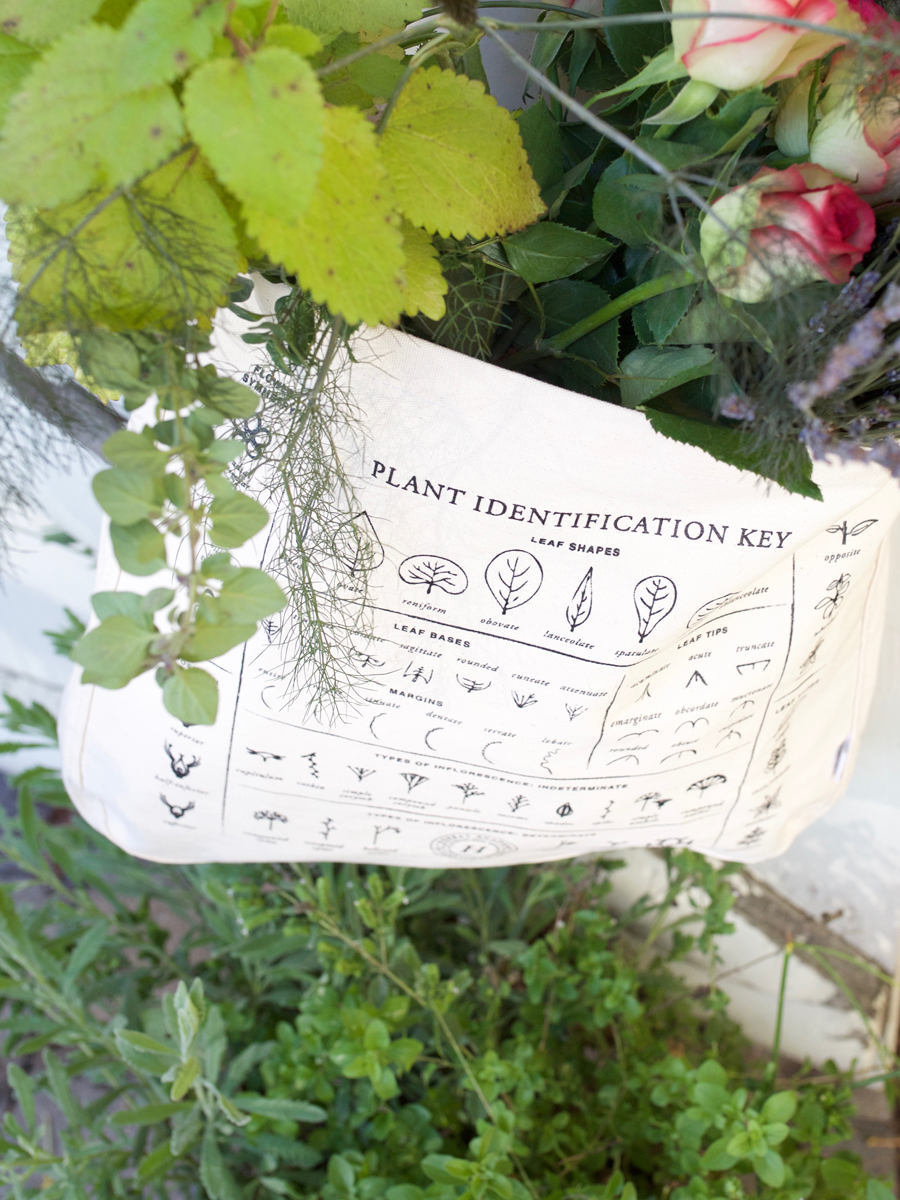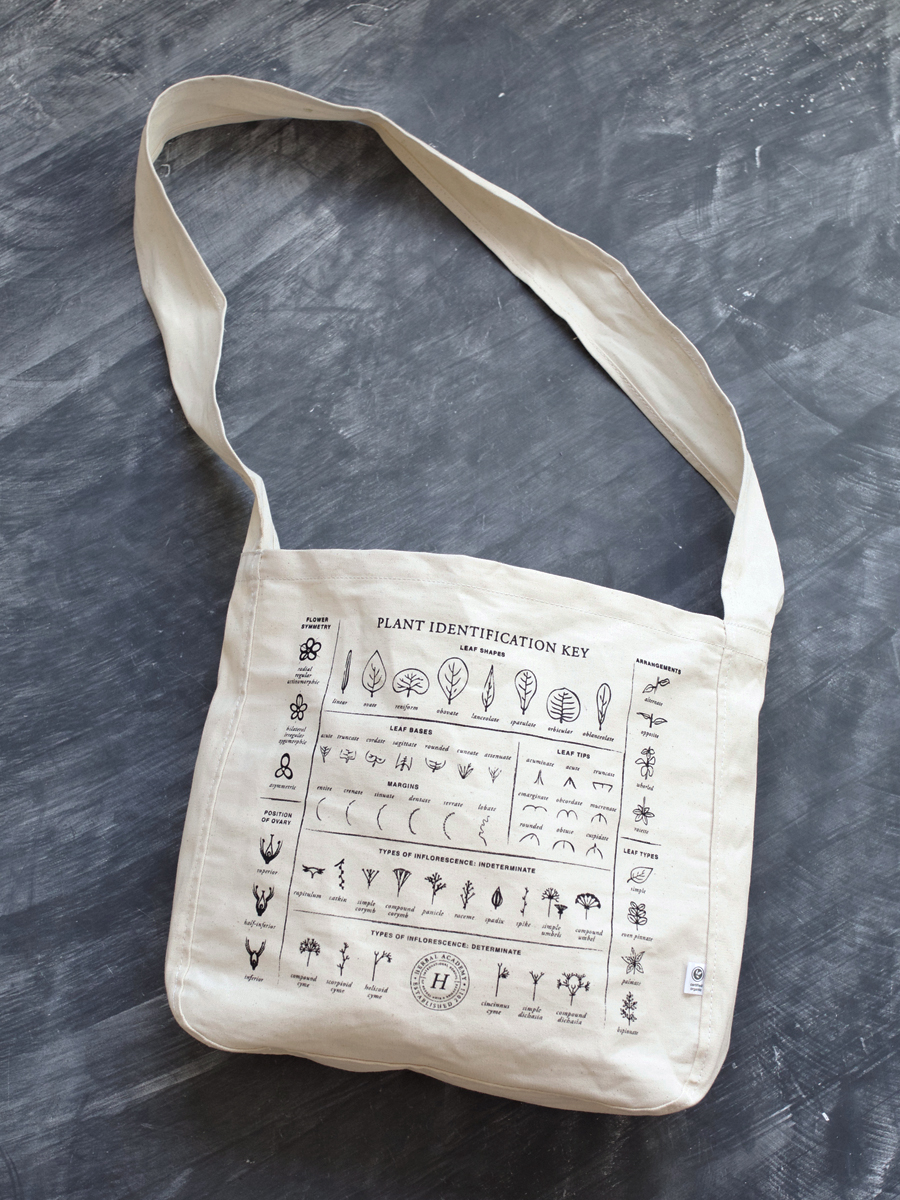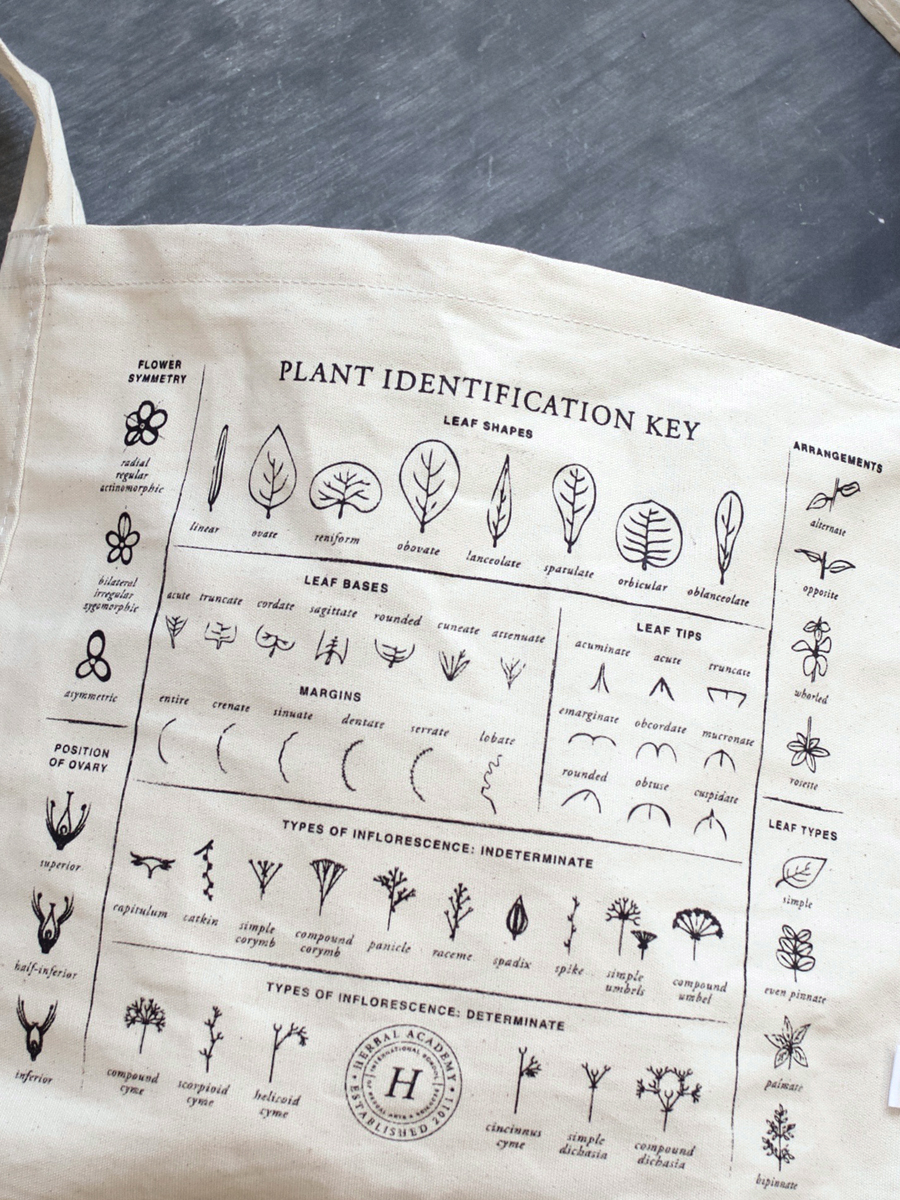Let Hope Blossom Botanical Tank
Let Hope Blossom Botanical Tank
From: $29.99 $24.99
Inspired by some of our very favorite uplifting and supportive plant allies, the Let Hope Blossom Botanical Tank is beautifully adorned with thoughtfully selected herbs that send a message of both hope and strength. The flowers speak to us, and we’re listening!
Throughout history, plants have been used and shared as a means to communicate emotions and to express different qualities. The intricate language of flowers was once meant to convey thoughts and feelings that were not said aloud, but we now spotlight the gentle “voices” of these plant allies with this sure-to-be new favorite botanical t-shirt.
Perfect for herbalists, garden lovers, foragers, or anyone looking to spread encouragement, comfort, and sweet herbal inspiration, this Botanical Tank reminds us to find joy in all seasons.
P.S. – This hope-filled botanical design is also available in a unisex T-shirt!
Please refer to the sizing chart below for measurements.
These shirts are unisex sizing, and do run big.
Dimensions:
XS: 16.25″ width / 26″ length
S: 18.25″ width / 27″ length
M: 20.25″ width / 28″ length
L: 22.25″ width / 29″ length
XL: 24.25″ width / 30″ length
2XL: 26.25″ width / 31″ length
Description
This botanical tank highlights plants and their meanings that speak to comfort, strength, and, of course, joy and hope. Slip into this cozy, inspiriting tank to spread these heartening messages!
Most flowers have multiple associations that may be interpreted differently across time and various cultures around the world. Below, we have expanded on the meanings of each plant for greater context with a focus on Victorian era symbolism. Naturally, one meaning may speak to you more than another.
What do the plants say to you, dear herbalist?
Rose
The beautiful red rose is most recognizable as a symbol of love, beauty, passion, and grace, but depending on the color, rose can also convey solemn or forlorn sentiments (The Language of Flowers, 1857). In Victorian symbolism, yellow rose means jealousy or infidelity, dark crimson imparts mourning, and pink conveys happiness (Boeckmann, 2021). Other symbolic meanings depending on rose species include freshness, gratitude, simplicity, youthfulness, and simplicity (Tanase, 2014).
Basil
During the Victorian era, sending basil to convey one’s intentions may have been risky business. Sweet basil may have been a symbol of good wishes (Boeckmann, 2021) or it may have communicated hatred for the recipient (The Language of Flowers, 1857). Basil is also a symbol for compassion and clarity, love, and courage in the face of difficulty (McIntyre, 1996).
Oregano
A plant with largely positive connotations, oregano has been said to bring joy (Tanase, 2014). Fittingly, oregano comes from the Greek oros (mountain) and ganos (joy), which literally means “joy of the mountains” or “mountain of happiness” (Oregano, 2002). In the Victorian language of flowers, oregano also signifies substance (Boeckmann, 2021).
Thyme
The theme of courage and bravery with respect to thyme is sustained throughout history. Roman soldiers were known to exchange sprigs of thyme as a sign of respect, and it has a long reputation as a symbol of strength (Rigsby, 1998). Thyme has also been associated with activity (Tanase, 2014).
Yarrow
In the Victorian language of flowers, yarrow is said to represent a “cure for heart” (Tanase, 2014) or “everlasting love” (Boeckmann, 2021). Thanks to the origin of its name, yarrow has been both a symbol of war and one of healing. Yarrow (Achillea millefolium) is named after Greek warrior Achilles, who is said to have used the herb to heal wounded soldiers (McIntyre, 1996).
Echinacea
In herbal use, echinacea is considered a broadly strengthening plant—implying that its flower symbolism is quite likely also one of fortitude. Echinacea flower essence has also been suggested to help find wholeness and strengthen the sense of self (McIntyre, 1996).
Chamomile
In the Victorian language of flowers, chamomile means “patience in adversity” or “energy in adversity” — meant to encourage the recipient to persevere through difficult times (Kirby, 2011). A gift of chamomile flowers could also be a symbol of wisdom and longevity (Rigsby, 1998).
Violet
In the old days, violets were the way to go to subtly let someone know they were on your mind. The language of flowers tells us that violet means “you occupy my thoughts” (The Language of Flowers, 1857). Other meanings depending on color include modesty, faithfulness, and true, everlasting love (Tanase, 2014).
Lavender
In Victorian times, lavender was given and displayed as a sign of love or devotion (Tanase, 2014). Lavender has also been said to signify acknowledgement and domestic virtue (Rigsby, 1998). While meanings attached to this plant are mostly positive, it has also been used to communicate distrust (Boeckmann, 2021).
Peppermint
Peppermint’s “warm feeling” sentiment (Tanase, 2014) makes sense, as it is a noticeably stimulating herb. Generally, mint has been said to signify virtue and wisdom (Rigsby, 1998). In various cultures, peppermint has also been tied to friendship, inspiration, clear thoughts, and eternal refreshment (McIntyre, 1996)!
We hope you enjoy this lovely botanical tank top and that it inspires you to find hope and strength from these plants!
REFERENCES
Boeckmann, C. (2021). Flower meanings: The language of flowers. [Article]. Retrieved from https://www.almanac.com/flower-meanings-language-flowers
Kirby, M. (2011). A Victorian flower dictionary. New York, NY: Ballantine Books.
McIntyre, A. (1996). Flower power: Flower remedies for healing body and soul through herbalism, homeopathy, aromatherapy, and flower essences. New York, NY: Henry Holt and Company.
Rigsby, G. (1998). Herb seed for thought. Frankston, TX: Spur Ridge Press.
Tanase, N. (2014). The language of flowers: The dictionary of flowers and their beautiful timeless meanings. [Ebook]. Available from https://www.amazon.com/Language-Flowers-Beautiful-Timeless-Meanings-ebook/dp/B00NAFBZD8
The language of flowers: An alphabet of floral emblems. (1857). London, England: T. Nelson and Sons. Retrieved from https://publicdomainreview.org/collection/the-language-of-flowers-an-alphabet-of-floral-emblems-1857
Oregano: The Genera Origanum and Lippia. (2002). United Kingdom: CRC Press.
Additional Information
| Weight | .53 lbs |
|---|---|
| Dimensions | 7.75 × 9.5 × 1.5 in |
| Size | XS, S, M, L, XL, 2XL |

